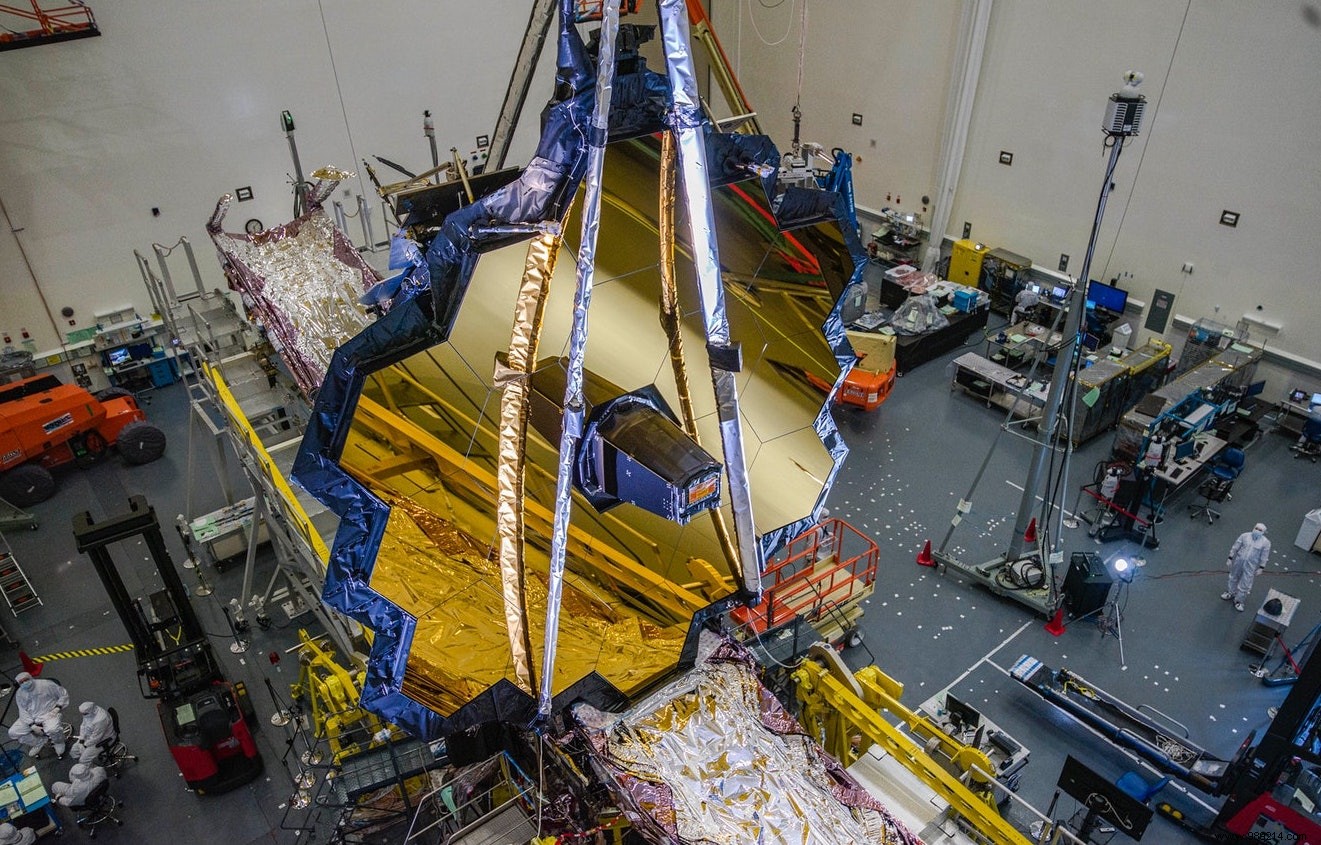The James Webb Telescope has just successfully deployed the final segment of its enormous primary mirror, capping off one of the most complicated space deployments of all. time. The mission team is now concentrating on aligning the various segments, before calibrating all the instruments.
It's done. On Saturday, January 8, the James Webb Telescope, the largest space telescope ever built, had successfully deployed all of its primary mirror. The latter had to "retract its wings" as part of the launch in order to fit in the payload fairing of its Ariane 5 rocket.
The observatory should arrive in its "parking spot" around Lagrange Point 2, 1.5 million kilometers from Earth by the 23rd january . In the meantime, the control teams will still have to carry out many complex commissioning operations. This will include aligning all segments of the mirror so that they can act as a single light collector.
"All segments are currently offset by a few millimeters. The goal is to get them closer to less than the size of a coronavirus, just tens of nanometers “, details Jane Rigby, scientist of the Webb exploitation project at NASA. Engineers warn:the first images collected will be blurry . It will be necessary to wait a few more weeks before all the settings are made in order to obtain the correct configuration.
At the end of the commissioning, the mission team plans an "series of impressive images » designed to show the capabilities of the telescope. His first targets have not yet been disclosed to the media , but it could be specific stars or more broadly a small nearby galaxy, such as the Large Magellanic Cloud to assess the telescope's ability to render nuances of brightness or inherent brightness.

The commissioning of the instruments will take place in parallel as soon as they are sufficiently cool. They will allow observations in the visible, near infrared and mid-infrared wavelengths (0.6 to 28.5 micrometers). “Each instrument has its own set of milestones “, continues the researcher. "It will be a challenge to [calibrate] once they reach temperature making sure they are all lined up “.
After go live which will take about six months , the researchers plan a five-month preliminary science operations period consisting of “early release science programs “, with a set of six categories of work ranging from planet formation to stellar physics .